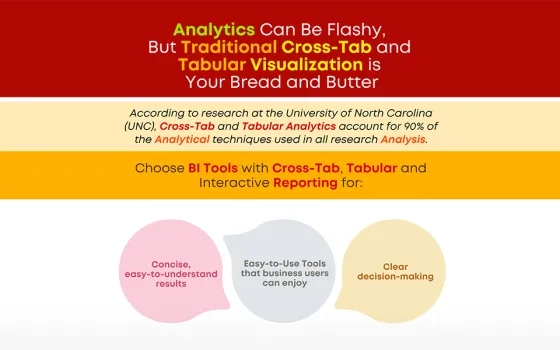In today's fast-paced and highly competitive business world, data analytics has become an essential tool for organizations to stay ahead of the curve. With the rise of big data, businesses have access to vast amounts of information that can be analyzed to gain valuable insights into their operations.
Data analytics enables businesses to make informed decisions based on real-time data, rather than relying on gut instincts or outdated information. By leveraging business intelligence and predictive analytics, companies can identify patterns and trends in their data, allowing them to optimize their operations and improve overall performance.
Moreover, data-driven decision-making has become a critical factor for success in many industries. Businesses that embrace analytics are better equipped to understand their customers' needs and preferences, anticipate market trends, and identify new opportunities for growth.
Types of Analytics and their Applications:
-Descriptive Analytics involves analyzing historical data to understand past performance. This type of analysis is useful in identifying patterns and trends that can inform future decisions. It often involves the use of dashboard reporting tools to visualize data and highlight key metrics.
-Predictive Analytics uses machine learning algorithms to make predictions about future trends and behaviors based on historical data. This type of analysis is useful in forecasting demand, identifying potential risks and opportunities, and optimizing business processes.
Prescriptive Analytics goes beyond predicting future outcomes to provide recommendations for action based on predictive insights. This often involves optimization algorithms that can identify the best course of action given specific constraints or objectives, as well as decision support systems that help businesses make informed decisions.
By using a combination of these types of analytics, businesses can gain a comprehensive understanding of their operations and make data-driven decisions that optimize their performance.
The Benefits of Implementing Effective Analytics:
Better Decision-Making: Making smarter decisions based on refined insights generated by effective analytics approaches. Implementing effective analytics offers numerous benefits for businesses of all sizes. One of the key advantages is improved decision-making capabilities. By leveraging data-driven insights, companies are able to make more informed and strategic decisions that drive business growth.
Increased Efficiency & Effectiveness: Achieving higher productivity levels with reduced resource requirements via efficient processes driven by analytics insights.
Better Market Positioning & Customer Engagement: Delivering better products & services with personalized messaging through customer profiling based on robust analytical capabilities.
Another benefit of effective analytics is increased efficiency and effectiveness. With the help of analytics tools, businesses can streamline their processes and operations, optimize resource allocation, and achieve higher levels of productivity with fewer resources. In addition to these benefits, effective analytics also enables better market positioning and customer engagement. By leveraging customer data to create personalized messaging strategies, businesses can build stronger relationships with their customers, improve customer retention rates, and ultimately increase revenue. Overall, implementing effective analytics is crucial for businesses that want to stay competitive in today's fast-paced marketplace. With its ability to drive better decision-making capabilities, increase efficiency and effectiveness, and improve market positioning and customer engagement strategies - it's no wonder why more companies are investing in this powerful technology.
Analytics Tools And Their Features:
Google Analytics - Segmenting traffic sources tracking user behavior and goal conversion.
Tableau - Creating visualizations such as charts, graphs, maps, and dashboards.
RapidMiner - Automating predictive models and workflows for business intelligence.
KISSmetrics - capturing granular user & customer data at a scale that is linked to key business metrics and providing insights into user behavior and engagement across various touchpoints.
Mixpanel - Tracking user actions and events to understand user behavior, retention, and conversion rates.
Adobe Analytics - Analyzing customer data from multiple channels such as email, social media, and mobile apps to improve customer experience and optimize marketing campaigns.
Crazy Egg - Generating heat maps that show how users interact with a website or app to identify areas for improvement in usability and design.
SEMrush - Conducting keyword research, tracking search rankings, analyzing backlinks, and monitoring competitor activity for SEO optimization.
How Organizations Are Leveraging Analytics to Drive Innovation and Growth?
Organizations are constantly looking for ways to drive innovation and growth. One of the key strategies they are using is leveraging analytics to gain valuable insights from their data. With real-time business intelligence reporting at scale, companies can make informed decisions quickly and efficiently.
Smart automation with machine learning algorithms is another way companies are leveraging analytics to drive innovation. By automating processes and analyzing data, organizations can identify patterns and trends that may not have been visible before.
Customer data is a valuable source of information that companies are tapping into to drive growth. By deriving insights from various sources such as social media, website analytics, and customer feedback, businesses can better understand their customers' needs and preferences.
Overall, leveraging analytics is becoming increasingly important for businesses looking to stay competitive in today's fast-paced market. By adopting these technologies and strategies, organizations can gain a competitive edge by making informed decisions based on real-time data analysis.
The Benefits of Utilizing Analytics in Your Business Strategy
In today's fast-paced business landscape, data is king. To stay ahead of the competition, companies need to make informed decisions based on data-driven insights. This is where analytics comes in - it allows businesses to collect and analyze large amounts of data to make better decisions.
By utilizing analytics in your business strategy, you can gain valuable insights into customer behavior, industry trends, and market dynamics. This information can help you make informed decisions that lead to improved productivity and efficiency, cost optimization, and enhanced customer experience.
Data-driven decision-making also enables businesses to identify areas for improvement and implement targeted solutions. With the help of analytics tools, companies can track key performance indicators (KPIs) and measure the success of their strategies over time.
Overall, incorporating analytics into your business strategy has numerous benefits that can help drive growth and success. From generating insights to improving productivity and enhancing the customer experience - analytics is a powerful tool for any modern business looking to stay ahead of the curve.
The Steps Involved in Effective Analytics:
Data Collection: Gathering relevant information from various sources. Relevant keywords: web analytics tools, business dashboards.
In today's digital age, data collection has become an essential part of any business strategy. Web analytics tools and business dashboards are two crucial methods for gathering relevant information from various sources. These tools can help businesses collect valuable insights about their customers, competitors, and industry trends. By analyzing this data, businesses can make informed decisions that can improve their overall performance and help them stay ahead in a highly competitive market. In this article, we will explore the importance of data collection and how web analytics tools and business dashboards can be used to gather relevant information for your business needs.
-Data Cleaning and Preprocessing: Filtering irrelevant or redundant information.
Data cleaning and preprocessing are critical steps in the data mining process. Without these steps, data analysis can be inaccurate, leading to poor decision-making. In order to effectively analyze data, irrelevant or redundant information must be removed. This is where data-cleaning software and outlier detection tools come into play. These tools can identify and remove errors in the data set, making it easier for analysts to extract meaningful insights from the remaining information. In this article, we will discuss how data cleaning and preprocessing can improve the accuracy of your analyses and explore some of the top software options available for these tasks.
Data Analysis and Interpretation: Analyzing patterns and trends to gain insights into business operations.
Data analysis and interpretation is a critical aspect of modern business operations. With the help of statistical analysis software and visualization platforms, businesses can gain valuable insights into their operations, customers, and competitors. By analyzing patterns and trends in data, businesses can make informed decisions that drive growth and success. These tools allow for the efficient processing of large amounts of data, making it easier to identify key performance indicators and areas for improvement. In this way, data analysis and interpretation have become essential components of a successful business strategy.















